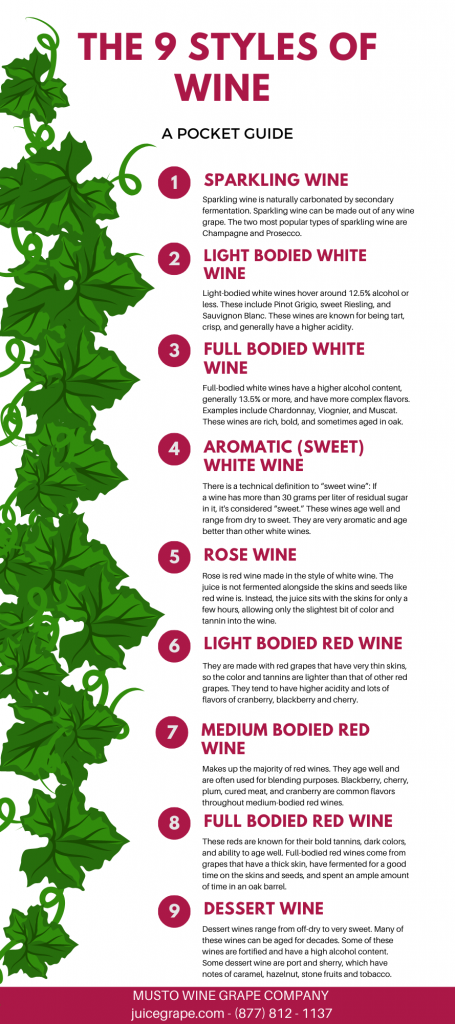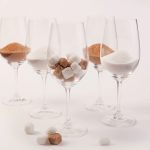My wine is sweet and I don’t want it to be
I made a sweet wine… but that wasn’t my intention!
When a wine that was supposed to be dry ends up sweet by accident, you may find yourself wondering a few things:
A) Why did this happen?
B) Where did I go wrong?
C) What can I do now?
First, let’s get back to basics.
For a wine to have residual sugar (RS) remaining, it must have not completely finished alcoholic fermentation. The only exception to this is if you backsweetened it purposely after it finished fermenting.
Potential root causes
My wine stopped fermenting before I wanted it to
Sometimes a fermentation will not complete despite your best efforts. Check your process – did you do all of the following?
- Start between 22-26 Brix. If it was above or below these numbers, did you make any adjustments?
- Added SO2 pre- chosen yeast add to kill off unwanted wild yeast
- Added a specified yeast strain and followed proper rehydration procedure
- Maintained temperatures so they did not drop too low or get too high
- Added correct amount of yeast nutrient at correct points in time
I accidentally chapitalized more than I meant to
This is a bit trickier to maneuver. Whether you added too much sugar pre-fermentation (to increase eventual alcohol level) or post-fermentation (to backsweeten), you may be stuck with more sugar than your chosen yeast is capable of converting. You could try to restart the fermentation after it initially slows down, but this could potentially increase the ABV way too much depending on how much you added.
You can try to follow a fermentation restart protocol. Or, you can decide to SO2 and add potassium sorbate to the wine and keep it sweet, or you could do bench trials adding acid and possibly tannin to see if you can create a newfound balance within the now sweet wine. *Important note: do not add potassium sorbate to the wine if it has gone through MLF*
I didn’t pitch yeast, I just let it spontaneously ferment
Without choosing a designated yeast that you can be certain will ferment your juice or must to dryness, you risk the possibility of wild yeast starting to ferment but not being able to finish, leading to a stuck fermentation.
I don’t want it to remain sweet. What can I do now?
- If you’re open to doing so, follow a stuck fermentation protocol to restart the ferment. See our blog post for a detailed protocol.
- Blend out the sweet wine with dry wine(s).
- Add acid to strike a balance within the wine – it may still technically be sweet, but by adding acid and/or tannin you may be able to create an enjoyable wine that doesn’t seem as cloyingly sweet as it may without additional acid or tannin.
SOS: Sluggish/stuck fermentation
Many a winemaker has lamented the dreaded stuck fermentation. With so much to deal with during harvest time, the last thing you should be worried about is a ferment that has just up and quit. But sometimes it happens – knowing what to do when it does will be a life saver during an otherwise potentially unfortunate moment in a wine’s life. We’re here to walk you through how to handle this, what to do, and most importantly, how to do it.
Step 1: Think about why it may have gotten stuck
This is going to help you moving forward, both with this wine and with future ferments. Was there too much sugar in the juice or must to begin with? Was the fermentation temperature too cool or too hot? Did you choose a yeast that doesn’t do well with high sugar levels? Were nutrient levels too low?
Considerations before restarting
- Adding lysozyme can halt spoilage organisms which are often present in sluggish or stuck fermentations
- Resuke can lower toxin levels that have accumulated which will give you a better chance for a healthy restart. If you add this you will rack off of it 1-2 days later.
- Incorporate Go-Ferm and Go-Ferm Protect Evolution to ensure health of ensuing restarting fermentation
- Carefully choose what yeast you will re-pitch with. 43, 43 Restart, Fermivin Champion, K1 (V1116), Vin 13, BC, and DV10 are great choices.
Step 2. Add a complex yeast nutrient
This is going directly into the stuck wine tank. If you think you may have a spoilage bacteria problem, this is the time you would be adding lysozyme.
Step 3. Combine equal parts stuck wine and water in another vessel
This is known as the “mother restart tank.” At this moment it will be totaling 2% of whole volume.
Step 4. Rehydrate yeast nutrient + yeast as you would when pitching yeast the first time
This is the exact same process you did during the initial yeast pitch.
Step 5. Add the yeast to the mother restart tank
As always, there should be a <18F difference between the yeast mixture and the mother restart tank liquid temperature.
Step 6. Add 10% of the stuck wine to the starter culture
Wait 20-30 minutes.
Step 7. Add 20% of the stuck wine to the starter culture
Wait 20-30 minutes.
Step 8. Repeat until the remainder of the stuck wine has been added to the mother restart tank
Don’t skimp on waiting the 20-30 minutes at each of the following steps. Give it time to acclimate!










Recent Comments